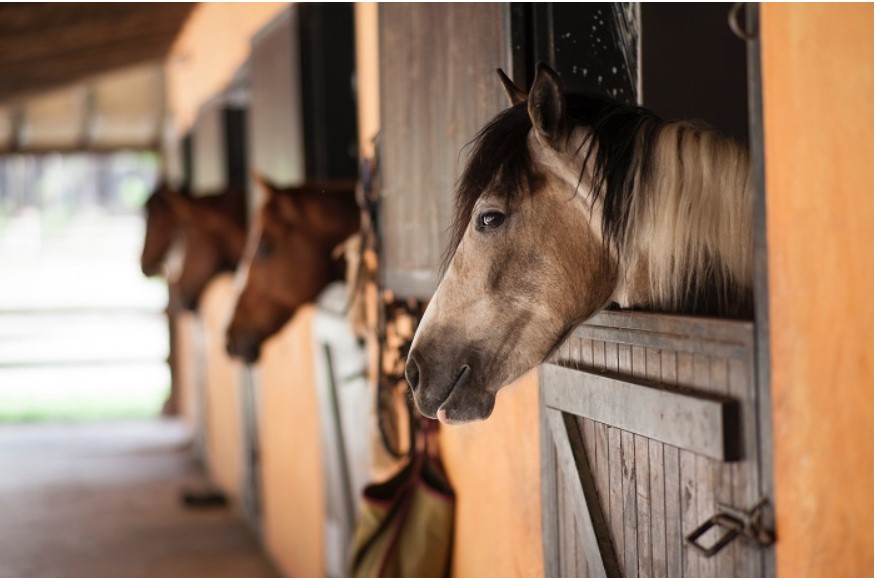By Sheryl Lynde | Horsetrader columnist

The underlying issue regarding a barn-sour or buddy-sour horse is that his attention is not on you. Some horses have more of a herd instinct than others. There is safety in the herd; it’s in their DNA. You may think that you have a strong bond with your horse because you feed him twice a day — and you may — but, he is in that stall or pasture 24/7 next to, or with, his barn companions.
The stronger bond will be with his companions, depending on your leadership skills and how often you ride.
Whether you realize it or not, you are a trainer. You are training your horse how to respond to you from the moment you enter their stall. If you don’t like the results of your training, then by changing your techniques you will change your horse’s behavior.
If your horse is hard to catch and hides behind his pasture mate or if he doesn’t want to leave his stall companion, this is your first issue to remedy. If there is room in his stall or run, I would ask him to face me prior to haltering him. If he presents his hindquarters instead — well, that is the wrong end. I’ll tap him on the rump with the end of my lead rope from a safe distance, and when he turns to face me, I’ll give him a moment to relax before I halter him. If he runs away before I get to him, I’ll make it my idea and urge him to do so; then, I will step back and ask him to face me. I’ll continue this as long as it takes until he is calm and stands facing me while I halter him. You have to take the time it takes whenever the behavior presents itself. If his stall isn’t big enough, once you get him haltered take him outside where you have room to work but stay reasonably close to the barn. While haltered, work him as you walk around the barn or paddock with energy, sending him in semi-circles in front of you, changing direction often by disengaging his hip and then moving his shoulders. Take advantage of working him around the barn and get control of his five body parts until you can do this with float in your lead rope. When his attention is focused on you, get him saddled. It’s the old adage, make it WORK where he wants to be and REST where you want him to be.
If he doesn’t stand still while being saddled, do the ground work again. Make sure he isn’t sluggish or chumping you as you work, you need to put energy into his gaits so that there is a definitive rest he is seeking. Behaviors take time to develop; they also take time to remedy. But if you stick with it, with regularity, you will make a difference.
They say five percent of people actually follow through with a goal that they set for themselves. It’s too much work, it’s too windy, too hot, too cold, I’m too tired, it’s not working. You can talk yourself out of any goal. If it were easy, everyone would become a trainer.
When he stands still, saddle and let him rest. Then head out. Feel your horse, right before he cries out for his companion, bring him back and work him all around the barn. If he cries, you took him too far too fast. It’s about emotional control. His apprehension will build as you head out, but it will subside as you turn to come back. He will become emotionally exhausted with the rise and fall of his separation anxiety, and soon he will give it up once he realizes he will see his companion again. Once at the barn, do serpentines, side pass, work on shoulder control. Then turn him toward the trail and head out again.
I did this for a couple hours one day — that’s how long it took me to get out of sight of my horse’s companion. It’s not the distance. I wanted to set her up for success, and that was a huge improvement. Set goals you can accomplish. As soon as I was out of sight, I stopped, rewarded her with a rub on her neck, and we turned and headed back. If she jigged back then we worked all the way back to the barn, we went into the arena and worked some more until she was quiet. When she was quiet, I dismounted, loosened her cinch and led her out of the arena. I had to repeat this for a couple of months, but we got it.
Eventually, when I turned her toward the barn, instead of speeding up, she actually slowed her pace considerably. Success.
–Sheryl
Leave a Comment
All fields must be filled in to leave a message.